 Donald Trump became 45th President of United States of America, and in a few months. So who are the most popular US Presidents of all time?The following is a ranking of the 10 best US Presidents. It is based off what the Presidents did while in office, in terms of policy, decision making, and legacy.America is world’s oldest democracy and arguably the strongest as well. These leaders who are now considered as the most popular US presidents of all time were the champion of building the nation from getting independence to establishing laws and ethics which made the USA a superpower in later years. Depending on what the presidents achieved during their service, their decision making and consequences of their choices, they are popular or less popular among the nation. A 2016 poll, done by the American Political Science Association among political scientists specializing in the American presidency, rated and ranked US presidents. Scroll down the find out who are the 10 most popular US presidents of all time. However, this does not mean that we can’t judge the long term consequences of their choices, as we do below. Based on various surveys conducted every year here is an aggregated ranking of popular presidents of United States of America as of 2017.
Donald Trump became 45th President of United States of America, and in a few months. So who are the most popular US Presidents of all time?The following is a ranking of the 10 best US Presidents. It is based off what the Presidents did while in office, in terms of policy, decision making, and legacy.America is world’s oldest democracy and arguably the strongest as well. These leaders who are now considered as the most popular US presidents of all time were the champion of building the nation from getting independence to establishing laws and ethics which made the USA a superpower in later years. Depending on what the presidents achieved during their service, their decision making and consequences of their choices, they are popular or less popular among the nation. A 2016 poll, done by the American Political Science Association among political scientists specializing in the American presidency, rated and ranked US presidents. Scroll down the find out who are the 10 most popular US presidents of all time. However, this does not mean that we can’t judge the long term consequences of their choices, as we do below. Based on various surveys conducted every year here is an aggregated ranking of popular presidents of United States of America as of 2017.Top 10 Most Popular US Presidents Of All Time
1. Abraham Lincoln
 He was the 16th president of the USA belonging to the Republican party and served from 1861 to 1865. He is most recognized for his effort to abolish slavery, strengthening the Federal structure and modernizing the economy. He is undoubtedly one of the greatest leaders the world has ever seen.Lincoln initially concentrated on the military and political dimensions of the war. His primary goal was to reunite the nation. He suspended habeas corpus, leading to the controversial ex parte Merryman decision, and he averted potential British intervention in the war by defusing the Trent Affair in late 1861. Lincoln closely supervised the war effort, especially the selection of top generals, including his most successful general, Ulysses S. Grant. He also made major decisions on Union war strategy, including a naval blockade that shut down the South's normal trade, moves to take control of Kentucky and Tennessee, and using gunboats to gain control of the southern river system. Lincoln tried repeatedly to capture the Confederate capital at Richmond; each time a general failed, Lincoln substituted another, until finally Grant succeeded. As the war progressed, his complex moves toward ending slavery included the Emancipation Proclamation of 1863; Lincoln used the U.S. Army to protect escaped slaves, encouraged the border states to outlaw slavery, and pushed through Congress the Thirteenth Amendment to the United States Constitution, which permanently outlawed slavery.Lincoln has been consistently ranked both by scholars and the public as among the greatest U.S. presidents.
He was the 16th president of the USA belonging to the Republican party and served from 1861 to 1865. He is most recognized for his effort to abolish slavery, strengthening the Federal structure and modernizing the economy. He is undoubtedly one of the greatest leaders the world has ever seen.Lincoln initially concentrated on the military and political dimensions of the war. His primary goal was to reunite the nation. He suspended habeas corpus, leading to the controversial ex parte Merryman decision, and he averted potential British intervention in the war by defusing the Trent Affair in late 1861. Lincoln closely supervised the war effort, especially the selection of top generals, including his most successful general, Ulysses S. Grant. He also made major decisions on Union war strategy, including a naval blockade that shut down the South's normal trade, moves to take control of Kentucky and Tennessee, and using gunboats to gain control of the southern river system. Lincoln tried repeatedly to capture the Confederate capital at Richmond; each time a general failed, Lincoln substituted another, until finally Grant succeeded. As the war progressed, his complex moves toward ending slavery included the Emancipation Proclamation of 1863; Lincoln used the U.S. Army to protect escaped slaves, encouraged the border states to outlaw slavery, and pushed through Congress the Thirteenth Amendment to the United States Constitution, which permanently outlawed slavery.Lincoln has been consistently ranked both by scholars and the public as among the greatest U.S. presidents.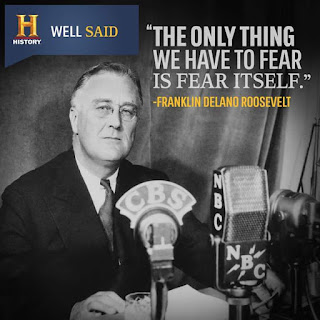 He was best known as FDR and served from 1933 to 1945 as the 32nd president of America. FDR was the only president in the US history to serve more than two terms.In the 1932 presidential election, Roosevelt defeated incumbent Republican president Herbert Hoover in a landslide to win the presidency. Roosevelt took office while in the United States was in the midst of the worst economic crisis in its history. Energized by his personal victory over polio, FDR relied on his persistent optimism and activism to renew the national spirit. During his first 100 days in office, Roosevelt spearheaded unprecedented federal legislation and issued a profusion of executive orders that instituted the New Deal—a variety of programs designed to produce relief (government jobs for the unemployed), recovery (economic growth), and reform (through regulation of Wall Street, banks and transportation). He created numerous programs to support the unemployed and farmers, and to encourage labor union growth while more closely regulating business and high finance. His support for the repeal of Prohibition in 1933 added to his popularity, helping him win re-election by a landslide in 1936. The economy improved rapidly from 1933–37, but then relapsed into a deep recession in 1937–38. The bipartisan Conservative Coalition that formed in 1937 prevented his packing the Supreme Court, and blocked almost all proposals for major liberal legislation (except the minimum wage, which did pass). When the war began and unemployment ended, conservatives in Congress repealed the two major relief programs, the WPA and CCC. However, they kept most of the regulations on business. Along with several smaller programs, major surviving programs include the Securities and Exchange Commission, the Wagner Act, the Federal Deposit Insurance Corporation and Social Security.Roosevelt's physical health seriously declined during the war years, and he died 11 weeks into his fourth term.
He was best known as FDR and served from 1933 to 1945 as the 32nd president of America. FDR was the only president in the US history to serve more than two terms.In the 1932 presidential election, Roosevelt defeated incumbent Republican president Herbert Hoover in a landslide to win the presidency. Roosevelt took office while in the United States was in the midst of the worst economic crisis in its history. Energized by his personal victory over polio, FDR relied on his persistent optimism and activism to renew the national spirit. During his first 100 days in office, Roosevelt spearheaded unprecedented federal legislation and issued a profusion of executive orders that instituted the New Deal—a variety of programs designed to produce relief (government jobs for the unemployed), recovery (economic growth), and reform (through regulation of Wall Street, banks and transportation). He created numerous programs to support the unemployed and farmers, and to encourage labor union growth while more closely regulating business and high finance. His support for the repeal of Prohibition in 1933 added to his popularity, helping him win re-election by a landslide in 1936. The economy improved rapidly from 1933–37, but then relapsed into a deep recession in 1937–38. The bipartisan Conservative Coalition that formed in 1937 prevented his packing the Supreme Court, and blocked almost all proposals for major liberal legislation (except the minimum wage, which did pass). When the war began and unemployment ended, conservatives in Congress repealed the two major relief programs, the WPA and CCC. However, they kept most of the regulations on business. Along with several smaller programs, major surviving programs include the Securities and Exchange Commission, the Wagner Act, the Federal Deposit Insurance Corporation and Social Security.Roosevelt's physical health seriously declined during the war years, and he died 11 weeks into his fourth term.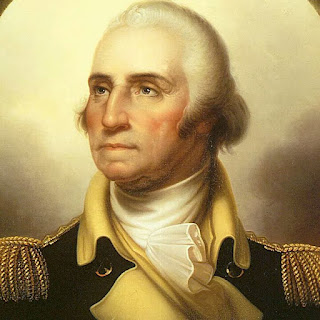 He was the first president of US. He was the military genius, who navigated the American battle of independence. He was the statesman who added to stabilize the American administration from political chaos.Washington was widely admired for his strong leadership qualities and was unanimously elected president by the Electoral College in the first two national elections. He oversaw the creation of a strong, well-financed national government that maintained neutrality in the French Revolutionary Wars, suppressed the Whiskey Rebellion, and won acceptance among Americans of all types. Washington's incumbency established many precedents still in use today, such as the cabinet system, the inaugural address, and the title Mr. President. His retirement from office after two terms established a tradition that lasted until 1940 when Franklin Delano Roosevelt won an unprecedented third term. The 22nd Amendment (1951) now limits the president to two elected terms.He was born into the provincial gentry of Colonial Virginia to a family of wealthy planters who owned tobacco plantations and slaves, which he inherited. In his youth, he became a senior officer in the colonial militia during the first stages of the French and Indian War. In 1775, the Second Continental Congress commissioned him as commander-in-chief of the Continental Army in the American Revolution. In that command, Washington forced the British out of Boston in 1776 but was defeated and nearly captured later that year when he lost New York City.He was revered in life and in death; scholarly and public polling consistently ranks him among the top three presidents in American history. He has been depicted and remembered in monuments, public works, currency, and other dedications to the present day.
He was the first president of US. He was the military genius, who navigated the American battle of independence. He was the statesman who added to stabilize the American administration from political chaos.Washington was widely admired for his strong leadership qualities and was unanimously elected president by the Electoral College in the first two national elections. He oversaw the creation of a strong, well-financed national government that maintained neutrality in the French Revolutionary Wars, suppressed the Whiskey Rebellion, and won acceptance among Americans of all types. Washington's incumbency established many precedents still in use today, such as the cabinet system, the inaugural address, and the title Mr. President. His retirement from office after two terms established a tradition that lasted until 1940 when Franklin Delano Roosevelt won an unprecedented third term. The 22nd Amendment (1951) now limits the president to two elected terms.He was born into the provincial gentry of Colonial Virginia to a family of wealthy planters who owned tobacco plantations and slaves, which he inherited. In his youth, he became a senior officer in the colonial militia during the first stages of the French and Indian War. In 1775, the Second Continental Congress commissioned him as commander-in-chief of the Continental Army in the American Revolution. In that command, Washington forced the British out of Boston in 1776 but was defeated and nearly captured later that year when he lost New York City.He was revered in life and in death; scholarly and public polling consistently ranks him among the top three presidents in American history. He has been depicted and remembered in monuments, public works, currency, and other dedications to the present day.4. Thomas Jefferson
He drafted the independence declaration of US. Thomas was the 3rd president of America and held office for two terms. Before to this, he was country’s 2nd vice president and its first secretary of state as well.Jefferson was primarily of English ancestry, born and educated in colonial Virginia. He graduated from the College of William & Mary and briefly practiced law, at times defending slaves seeking their freedom. During the American Revolution, he represented Virginia in the Continental Congress that adopted the Declaration, drafted the law for religious freedom as a Virginia legislator, and served as a wartime governor (1779–1781). He became the United States Minister to France in May 1785, and subsequently the nation's first Secretary of State in 1790–1793 under President George Washington. Jefferson and James Madison organized the Democratic-Republican Party to oppose the Federalist Party during the formation of the First Party System. With Madison, he anonymously wrote the controversial Kentucky and Virginia Resolutions in 1798–1799, which sought to embolden states' rights in opposition to the national government by nullifying the Alien and Sedition Acts. As President, Jefferson pursued the nation's shipping and trade interests against Barbary pirates and aggressive British trade policies. He also organized the Louisiana Purchase, almost doubling the country's territory. As a result of peace negotiations with France, his administration reduced military forces. He was reelected in 1804. Jefferson's second term was beset with difficulties at home, including the trial of former Vice President Aaron Burr. American foreign trade was diminished when Jefferson implemented the Embargo Act of 1807, responding to British threats to U.S. shipping. In 1803, Jefferson began a controversial process of Indian tribe removal to the newly organized Louisiana Territory, and he signed the Act Prohibiting Importation of Slaves in 1807.
you can also see this video
https://www.youtube.com/watch?v=nSZiqU9i4fM
you can also see this video
https://www.youtube.com/watch?v=nSZiqU9i4fM
5. Theodore Roosevelt
 Famously known as “Teddy” Roosevelt was the 26th president of united states. As a Republican President, he is often considered as the leader who became the driving force for the progressive era of the United States in the 20th century.Following the assassination of President McKinley in September 1901, Roosevelt succeeded to the office at age 42, becoming the youngest United States President in history. Leading his party and country into the Progressive Era, he championed his "Square Deal" domestic policies, promising the average citizen fairness, breaking of trusts, regulation of railroads, and pure food and drugs. Making conservation a top priority, he established a myriad of new national parks, forests, and monuments intended to preserve the nation's natural resources. In foreign policy, he focused on Central America, where he began construction of the Panama Canal. He greatly expanded the United States Navy, and sent the Great White Fleet on a world tour to project the United States' naval power around the globe. His successful efforts to end the Russo-Japanese War won him the 1906 Nobel Peace Prize. Elected in 1904 to a full term, Roosevelt continued to promote progressive policies, but many of his efforts and much of his legislative agenda were eventually blocked in Congress. Roosevelt successfully groomed his close friend, William Howard Taft, to succeed him in the presidency. After leaving office, Roosevelt went on safari in Africa and toured Europe. Returning to the U.S., he became frustrated with Taft's approach as his successor. He tried but failed to win the presidential nomination in 1912. Roosevelt founded his own party, the Progressive, so-called "Bull Moose" Party, and called for wide-ranging progressive reforms. The split among Republicans enabled the Democrats to win both the White House and a majority in the Congress in 1912. Republicans aligned with Taft nationally would control the Republican Party for decades.
Famously known as “Teddy” Roosevelt was the 26th president of united states. As a Republican President, he is often considered as the leader who became the driving force for the progressive era of the United States in the 20th century.Following the assassination of President McKinley in September 1901, Roosevelt succeeded to the office at age 42, becoming the youngest United States President in history. Leading his party and country into the Progressive Era, he championed his "Square Deal" domestic policies, promising the average citizen fairness, breaking of trusts, regulation of railroads, and pure food and drugs. Making conservation a top priority, he established a myriad of new national parks, forests, and monuments intended to preserve the nation's natural resources. In foreign policy, he focused on Central America, where he began construction of the Panama Canal. He greatly expanded the United States Navy, and sent the Great White Fleet on a world tour to project the United States' naval power around the globe. His successful efforts to end the Russo-Japanese War won him the 1906 Nobel Peace Prize. Elected in 1904 to a full term, Roosevelt continued to promote progressive policies, but many of his efforts and much of his legislative agenda were eventually blocked in Congress. Roosevelt successfully groomed his close friend, William Howard Taft, to succeed him in the presidency. After leaving office, Roosevelt went on safari in Africa and toured Europe. Returning to the U.S., he became frustrated with Taft's approach as his successor. He tried but failed to win the presidential nomination in 1912. Roosevelt founded his own party, the Progressive, so-called "Bull Moose" Party, and called for wide-ranging progressive reforms. The split among Republicans enabled the Democrats to win both the White House and a majority in the Congress in 1912. Republicans aligned with Taft nationally would control the Republican Party for decades. Wilson was the 28th president of United States of America and one of the most popular as well. He was a dominant Republican leader who passed several bills in the Congress which was controlled by Democrats at that time. He was one of the very first leaders who called for strengthening global democracy.While in office, Wilson reintroduced the spoken State of the Union, which had been out of use since 1801. Leading the Congress that was now in Democratic hands, he oversaw the passage of progressive legislative policies unparalleled until the New Deal in 1933.[2] The Federal Reserve Act, Federal Trade Commission Act, the Clayton Antitrust Act, and the Federal Farm Loan Act were some of these new policies. Having taken office one month after ratification of the Sixteenth Amendment, Wilson called a special session of Congress, whose work culminated in the Revenue Act of 1913, introducing an income tax and lowering tariffs. Through passage of the Adamson Act that imposed an 8-hour workday for railroads, he averted a railroad strike and an ensuing economic crisis.[3] Upon the outbreak of World War I in 1914, Wilson maintained a policy of neutrality, while pursuing a more aggressive policy in dealing with Mexico's civil war.Wilson faced former New York Governor Charles Evans Hughes in the presidential election of 1916. By a narrow margin, he became the first Democrat since Andrew Jackson elected to two consecutive terms. Wilson's second term was dominated by American entry into World War I. In April 1917, when Germany had resumed unrestricted submarine warfare and sent the Zimmermann Telegram, Wilson asked Congress to declare war in order to make "the world safe for democracy." The United States conducted military operations alongside the Allies, although without a formal alliance. During the war, Wilson focused on diplomacy and financial considerations, leaving military strategy to the generals, especially General John J. Pershing. Loaning billions of dollars to Britain, France, and other Allies, the United States aided their finance of the war effort. Through the Selective Service Act, conscription sent 10,000 freshly trained soldiers to France per day by the summer of 1918 while at the same time didn't grant political sanctuary to Russia's Nicholas II and/or his family when Nicholas was deposed as czar in 1917 and sent into internal exile, where the shooting of the Romanov family occurred in 1918. On the home front, he raised income taxes, borrowing billions of dollars through the public's purchase of Liberty Bonds. He set up the War Industries Board, promoted labor union cooperation, regulating agriculture and food production through the Lever Act, and granting to the Secretary of the Treasury, William McAdoo, direct control of the nation's railroad system
Wilson was the 28th president of United States of America and one of the most popular as well. He was a dominant Republican leader who passed several bills in the Congress which was controlled by Democrats at that time. He was one of the very first leaders who called for strengthening global democracy.While in office, Wilson reintroduced the spoken State of the Union, which had been out of use since 1801. Leading the Congress that was now in Democratic hands, he oversaw the passage of progressive legislative policies unparalleled until the New Deal in 1933.[2] The Federal Reserve Act, Federal Trade Commission Act, the Clayton Antitrust Act, and the Federal Farm Loan Act were some of these new policies. Having taken office one month after ratification of the Sixteenth Amendment, Wilson called a special session of Congress, whose work culminated in the Revenue Act of 1913, introducing an income tax and lowering tariffs. Through passage of the Adamson Act that imposed an 8-hour workday for railroads, he averted a railroad strike and an ensuing economic crisis.[3] Upon the outbreak of World War I in 1914, Wilson maintained a policy of neutrality, while pursuing a more aggressive policy in dealing with Mexico's civil war.Wilson faced former New York Governor Charles Evans Hughes in the presidential election of 1916. By a narrow margin, he became the first Democrat since Andrew Jackson elected to two consecutive terms. Wilson's second term was dominated by American entry into World War I. In April 1917, when Germany had resumed unrestricted submarine warfare and sent the Zimmermann Telegram, Wilson asked Congress to declare war in order to make "the world safe for democracy." The United States conducted military operations alongside the Allies, although without a formal alliance. During the war, Wilson focused on diplomacy and financial considerations, leaving military strategy to the generals, especially General John J. Pershing. Loaning billions of dollars to Britain, France, and other Allies, the United States aided their finance of the war effort. Through the Selective Service Act, conscription sent 10,000 freshly trained soldiers to France per day by the summer of 1918 while at the same time didn't grant political sanctuary to Russia's Nicholas II and/or his family when Nicholas was deposed as czar in 1917 and sent into internal exile, where the shooting of the Romanov family occurred in 1918. On the home front, he raised income taxes, borrowing billions of dollars through the public's purchase of Liberty Bonds. He set up the War Industries Board, promoted labor union cooperation, regulating agriculture and food production through the Lever Act, and granting to the Secretary of the Treasury, William McAdoo, direct control of the nation's railroad system7. Harry S. Truman
Harry was selected as the 33rd president of US. He led America via the end stages of world war II. He even witnessed the early period of cold war, by opposing the enhancement of the communist invasion of South Korea and the Soviet Union in Europe.Truman was born in Independence, Missouri, and spent most of his youth on his family's 600-acre farm near Independence. In the last months of World War I, he served in combat in France as an artillery officer with his National Guard unit. After the war, he briefly owned a haberdashery in Kansas City, Missouri, and joined the Democratic Party and the political machine of Tom Pendergast. Truman was first elected to public office as a county official in 1922, and then as a U.S. Senator in 1934. He gained national prominence as chairman of the Truman Committee, formed in March 1941, which claimed to find and correct problems such as waste and inefficiency in Federal Government wartime contracts. In reality, the War Production Board quickly discovered that although their mathematical models attempted to account for all possible sources of insufficiency, that in practice insufficient material was arriving at the front. Consequently, they multiplied the projected requirements by ten. Further, there were secret projects such as the Manhattan Project where the expenditures were not detailed in reports to Congress. According to a story published in the Tri-City Herald, then Senator Truman was once turned away at the gates of the Hanford Engineering Works during one of his investigations. His interference with the war effort may have been one of the factors for substituting Truman for Henry A. Wallace as the vice presidential nominee in 1944.
8. James Madison
Madison was one of the founding father of the United States of America who also served as Secretary of States to Thomas Jefferson. He was the pioneer in supporting a stronger national government, Miltary, and national bank.Madison inherited his plantation Montpelier in Virginia and therewith owned hundreds of slaves during his lifetime. He served as both a member of the Virginia House of Delegates and as a member of the Continental Congress prior to the Constitutional Convention. After the Convention, he became one of the leaders in the movement to ratify the Constitution, both in Virginia and nationally. His collaboration with Alexander Hamilton and John Jay produced The Federalist Papers, among the most important treatises in support of the Constitution. Madison's political views changed throughout his life. During deliberations on the Constitution, he favored a strong national government, but later preferred stronger state governments, before settling between the two extremes later in his life.In 1789, Madison became a leader in the new House of Representatives, drafting many general laws. He is noted for drafting the first ten amendments to the Constitution, and thus is known also as the "Father of the Bill of Rights." [3] He worked closely with President George Washington to organize the new federal government. Breaking with Hamilton and the Federalist Party in 1791, he and Thomas Jefferson organized the Democratic-Republican Party. In response to the Alien and Sedition Acts, Jefferson and Madison drafted the Kentucky and Virginia Resolutions, arguing that states can nullify unconstitutional laws.
9. Dwight D. Eisenhower
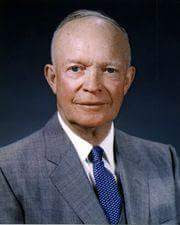 Dwight was the 34th American president. During the world war 2nd, he catered as supreme commander of allied forces. During his holding, he is known for the ceasefire of Korean battle and even kept a soviet union under control during the cold war.Eisenhower entered the 1952 presidential race as a Republican to counter the non-interventionism of Senator Robert A. Taft, campaigning against "communism, Korea and corruption." He won in a landslide, defeating Democratic candidate Adlai Stevenson and temporarily upending the New Deal Coalition. Eisenhower was the first U.S. president to be constitutionally term-limited under the 22nd Amendment and the only president born before the 20th century to be so.Eisenhower's main goals in office were to keep pressure on the Soviet Union and reduce federal deficits. In the first year of his presidency, he threatened the use of nuclear weapons in an effort to conclude the Korean War; his New Look policy of nuclear deterrence prioritized inexpensive nuclear weapons while reducing funding for conventional military forces. He ordered coups in Iran and Guatemala. Eisenhower gave major aid to help the French in the First Indochina War, and after the French were defeated he gave strong financial support to the new state of South Vietnam. Congress agreed to his request in 1955 for the Formosa Resolution, which obliged the U.S. to militarily support capitalist Taiwan and continue the isolation of the People's Republic of China.
Dwight was the 34th American president. During the world war 2nd, he catered as supreme commander of allied forces. During his holding, he is known for the ceasefire of Korean battle and even kept a soviet union under control during the cold war.Eisenhower entered the 1952 presidential race as a Republican to counter the non-interventionism of Senator Robert A. Taft, campaigning against "communism, Korea and corruption." He won in a landslide, defeating Democratic candidate Adlai Stevenson and temporarily upending the New Deal Coalition. Eisenhower was the first U.S. president to be constitutionally term-limited under the 22nd Amendment and the only president born before the 20th century to be so.Eisenhower's main goals in office were to keep pressure on the Soviet Union and reduce federal deficits. In the first year of his presidency, he threatened the use of nuclear weapons in an effort to conclude the Korean War; his New Look policy of nuclear deterrence prioritized inexpensive nuclear weapons while reducing funding for conventional military forces. He ordered coups in Iran and Guatemala. Eisenhower gave major aid to help the French in the First Indochina War, and after the French were defeated he gave strong financial support to the new state of South Vietnam. Congress agreed to his request in 1955 for the Formosa Resolution, which obliged the U.S. to militarily support capitalist Taiwan and continue the isolation of the People's Republic of China.
He was an actor turned politician and served as the 40th president of US. He was in office for two consecutive terms. During his holding, he implemented several foreign policies and bold economic like INF Treaty, Substantial Tax Cuts, etc.Entering the presidency in 1981, Reagan implemented sweeping new political and economic initiatives. His supply-side economic policies, dubbed "Reaganomics", advocated tax rate reduction to spur economic growth, control of the money supply to curb inflation, economic deregulation, and reduction in government spending. In his first term he survived an assassination attempt, spurred the War on Drugs, and fought public sector labor. Over his two terms, the economy saw a reduction of inflation from 12.5% to 4.4%, and an average annual growth of real GDP of 3.4; while Reagan did enact cuts in domestic discretionary spending, tax cuts and increased military spending contributed to increased federal outlays overall, even after adjustment for inflation. During his re-election bid, Reagan campaigned on the notion that it was "Morning in America", winning a landslide in 1984 with the largest electoral college victory in history. Foreign affairs dominated his second term, including ending of the Cold War, the bombing of Libya, and the Iran–Contra affair. Publicly describing the Soviet Union as an "evil empire", and during his famous speech at the Brandenburg Gate, President Reagan challenged Gorbachev to "tear down this wall!". He transitioned Cold War policy from détente to rollback, by escalating an arms race with the USSR while engaging in talks with Soviet General Secretary Mikhail Gorbachev, which culminated in the INF Treaty, shrinking both countries' nuclear arsenals.[1] Reagan's presidency came during the decline of the Soviet Union and just ten months after the end of his term, the Berlin Wall fell, and on December 26, 1991, nearly three years after he left office, the Soviet Union collapsed.
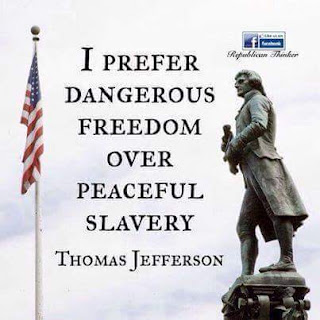
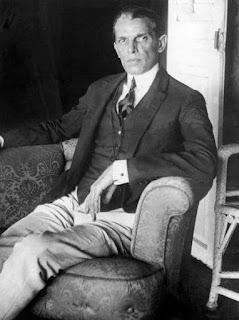
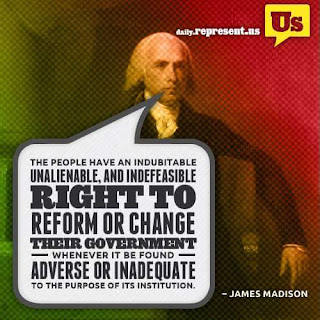
0 comments:
Post a Comment